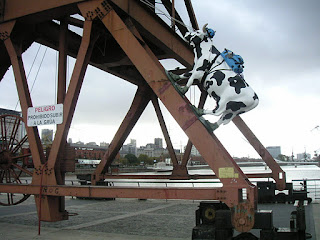Dante, Leonardo, Machiavelli, Michelangelo, Botticelli, Galileo, the Medici and you. What a feeling, to walk the same streets as they did, in one of the most beautiful cities in the world. To talk of Florence is to talk of power and of art.
The Piazza del Duomo will be our starting point where the enormous dome of the Cathedral of Santa Maria dei Fiori raises above Florence as a symbol for the city. The dome was designed by Filippo Brunelleschi and was the largest in the world at the time.
 From here you can walk to the Piazza della Signoria, named after the Palazzo della Signoria, the centre of power during the Florentine Republic, which today houses the Town Hall. The statue of David by Michelangelo is a copy but you can see the original at the Galleria dell'Accademia . Around the corner from here we find the Galleria degli Uffizi, containing the Medici art collection. Here you will find a wonderful collection of works by Giotto, Piero della Francesca, Fra Angelico, Botticelli, Leonardo, Raphael, Michelangelo, Caravaggio and many others. I would advise booking your ticket over the internet or reserving your ticket at the ticket office. It will cost you Eur 4 more per ticket but you will avoid the long queues.
After the Uffizi you will need some fresh air and I suggest you walk towards the Ponte Vecchio.
From here you can walk to the Piazza della Signoria, named after the Palazzo della Signoria, the centre of power during the Florentine Republic, which today houses the Town Hall. The statue of David by Michelangelo is a copy but you can see the original at the Galleria dell'Accademia . Around the corner from here we find the Galleria degli Uffizi, containing the Medici art collection. Here you will find a wonderful collection of works by Giotto, Piero della Francesca, Fra Angelico, Botticelli, Leonardo, Raphael, Michelangelo, Caravaggio and many others. I would advise booking your ticket over the internet or reserving your ticket at the ticket office. It will cost you Eur 4 more per ticket but you will avoid the long queues.
After the Uffizi you will need some fresh air and I suggest you walk towards the Ponte Vecchio.
This 14th Century bridge over the river Arno, is today occupied by the goldsmiths and silversmiths of Florence. The Vasari Corridor, is a raised passageway above the shops connecting the Uffizi with the Pitti Palace, built by Vasari in 1565 so that the Medici could move conveniently between their palaces. Visiting is limited. By now you must be famished, not to worry. Once you cross the Ponte Vecchio turn right, walk for about 15 minutes and look for Antico Ristoro di Cambi a family run restaurant with great food and reasonable prices. Try the the bistecca alla fiorentina, if you dare.
On this side of the river there are a couple of places you should visit. One is the Palazzo Pitti, built in the 15th Century by Luca Pitti, a wealthy merchant and rival of the Medici, which around a century later, was acquired by the Medici.The palace has different collections, including paintings, gold and luxury objects. The gardens, Giardino di Boboli, are worth a visit. The other is the Piazzale Michelangelo for a superb view of the skyline of Florence.
I have already mentioned the Galleria dell'Accademia where you can admire Michelangelo's David and the unfinished Slaves. The Museo Nazionale del Bargello is also worth a visit. for Renaissance sculptures, including masterpieces by Donatello and Michelangelo.
Besides Santa Maria del Fiori, there are at least three churches that should be visited in Florence: Santa Croce, which besides being the final resting place for some of the most famous Florentines, is famous for what has become known as Stendhal's syndrome, after the French writer was overwhelmed by the beauty of the place and suffered dizziness; Santa Maria Novella with its unforgettable façade; and the Basilica of San Lorenzo which houses the Cappelle Medicee Museum and the mausoleum of the Medici family.
To end, a note on two places which you may wish to visit. The first, for a snack, a coffee, a glass of wine, or all three, if you are in the area of the Piazza della Signoria is Cantinetta dei Verrazzano. The other is Alle Murate, for a romantic dinner in exquisite surroundings under
restored 14th Century frescoes.



















